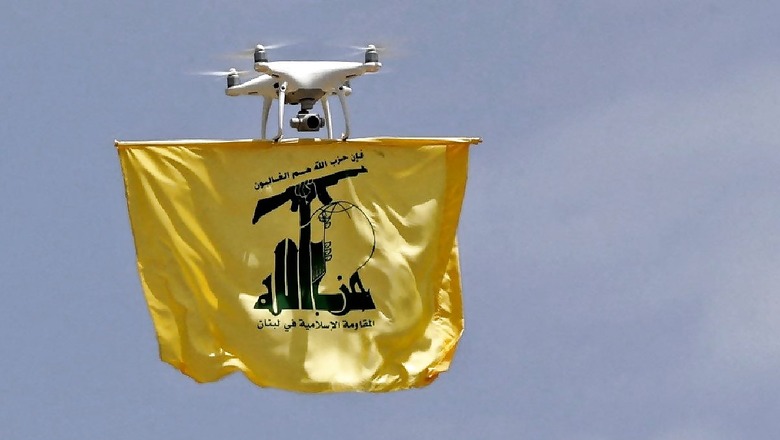
views
Hezbollah has concentrated on building its aerial capabilities, mainly through unmanned aerial vehicles (UAVs), over the past few years and has used it in its attacks on northern Israel which began shortly after October 7 attacks. The Lebanese militant group has launched precise strikes on Israeli buildings while making the detection and interception of its drones more challenging for the Israeli military and its acclaimed defence systems.
Hezbollah’s aerial capabilities have shown their effectiveness in several cases, most recently with the drone launch towards Israeli Prime Minister Benjamin Netanyahu’s residence on Saturday.
“A UAV (unmanned aerial vehicle) was launched toward the prime minister’s residence in Caesarea. The prime minister and his wife were not at the location, and there were no injuries in the incident,” Netanyahu’s office said in a statement.
Last week, the attack on a Golani Brigade training base that killed four soldiers and injured dozens was also done using a drone.
The operatives handling these UAVs are part of Unit 127, which falls under Hezbollah’s aerial division.
Unit 127, equipped with various types of drones based on Iranian technology, advanced its operations when Hezbollah fought alongside the Syrian Army, Iran and Russia against rebels and jihadist fighters in Syria. Its operatives are spread across Lebanon and have received additional training from Iran’s Quds Force to strengthen their capabilities, according to a report by the Jerusalem Post.
Last week, during the attack on Golani Bridge training base, its drone carried out a precise strike on a dining hall.
“Operating a Shahed 107 UAV is very easy, and its design and materials make it difficult to detect, track, and intercept, especially due to its ability to fly at low altitudes,” an official told the Jerusalem Post. Shaheds are Iranian-made drones. In recent years, Unit 127 has expanded its storage sites, launchers, and runways for large drones beyond Lebanon’s Bekaa Valley to other locations, the Israeli news media outlet said.
It also said that Hezbollah’s UAVs are either optically guided (image-seeking) or GPS-guided. They also use remotely controlled UAVs or operate those UAVs on pre-programmed flight paths. The warhead size varies with the drone’s size and flight range. Hezbollah has drones that can strike targets with an accuracy of just a few dozen metres.
The Israeli Air Force (IAF) has developed several methods to detect, track, and intercept these UAVs. Hezbollah frequently tries to evade both the IAF and the Israel Defense Forces (IDF) by launching multiple drones simultaneously or coordinating them with rocket launches to distract and overwhelm detection systems.
Israel, however, has caused major damages to the militant group’s leadership and infrastructure.
Israel is fighting a war against Hamas ally Hezbollah in Lebanon, with Israel sending ground troops across the Lebanese border last month.
On Friday, the Israeli military said it had destroyed Hezbollah’s regional command centre with an air strike.




















Comments
0 comment